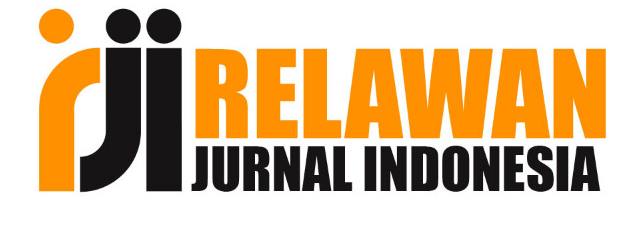USING WEBSITE AS A TOOL FOR PRACTICING ENGLISH LISTENING SKILL
DOI:
https://doi.org/10.36982/jge.v6i1.262Abstract
Listening is a process included activity of listening sound of language and visual aspect, identify, interprete, value, and do reaction for the content of meaning. Technology is useful to teach listening because each type of technology provides opportunities for students to explore their ranges of listening strategies.Multimedia technology becomes more accessible to teachers and learners of other languages, its potential as a tool to enhance listening skills becomes a practical option. The technology mediates the process, getting language out there and giving feedback that shows whether someone has or hasn’t understood what people have said.It makes that possible wherever people are in the world. Teachers and learners can go online to listen to material about different areas of interest, and can then speak about what they have discovered, telling others in the class or other classes elsewhere in the world. The Internet is suitable place to practice languages as it offers the possibility, with the right software, of using images and audio resources at the same time, combining sounds and images as in communicative situations in the real world. It also provides users with a highly appealing and innovative format. But only when the sources are properly selected can the internet be useful in learning environment. There is a plethora of educational material available online and accessible via Web search engines. In short, using websites for practicing listening can be a good assistance for students to practice their language learning ability.
Key words: Listening, English, Website
References
Ahmed, A. and Abdulaziz, E. (2006). Examining Students Performance and Attitudes towards the Use of Information Technology in a Virtual and Conventional Setting. The Journal of Interactive Online Learning, 2 (3), 1-9.
Aytekin, I. (2004). Attitudes of Students towards Internet. Turkish Online Journal of Distance Education-TOJDE, 5 (4), 1-8.
Bowen, J. D., Madsen, H., & Hilferty, A. (1985). TESOL Techniques and Procedures. Boston, MA: Heinle & Heinle Publishers.
Chapple, L. & A. Curtis. (2000). Content-based instruction in Hong Kong: student responses to film. System, 28, 419-423.
Costa, W. (1985). Developing Mind: A Resource Book for Teaching Thinking. Alexandria:ASCD.
Debski R. and Gruba P. (1999). A qualitative survey of tertiary instructor attitudes towards project-based CALL. Computer-Assisted Language Learning,12 (3), 219-239.
Embi, M.A. & Latiff, A. A. (2004). Trainees’ perception on E-Learn: A Malaysian based ESL Web Site, Internet Journal of Language Learning & Teaching, 1(2), 48-57.
Fernadez, M. V. (2001). The EFL teacher and the introduction of multimedia in the classroom. Computer-AssistedLanguage Learning, 14 (1), 3-14
Field, J. (2009). Listening in the Language Classroom.Cambridge:Cambridge University Press.
Goss, B. (1982). Listening as Information Processing. Communication Quarterly, 30, 304-307.http://dx.doi.org/10.1080/01463378209369465
Hamouda, A. (2013). An Investigation of Listening Comprehension Problems Encountered by Saudi Students in the EL Listening Classroom. International Journal of Academic Research in Progressive Education and Development, 2(2), 113-15.
Hong, K.-S., Ridzuan, A. A., and Kuek, M.-K. (2003). Students' attitudes toward the use of the Internet for learning: A study at a university in Malaysia. Educational Technology & Society, 6 (2), 45-49.
Ivers, K. S., & Barron, A. E. (2002). Multimedia Projects in Education. (Second Edition). Englewood, CO: Libraries Unlimited.
Levy, M. (1997). Computer-assisted language learning: Context and conceptualization. Oxford: Clarendon Press.
Morley, J. (2001). Aural Comprehension Instruction: Principles and Practices. In M. Celce-Murcia (Ed.), Teaching English as a Second or Foreign Language (pp. 69-85) Boston: Heinle and Heinle.
Nadig, A. (2013). Listening Comprehension. Encyclopedia of Autism Spectrum Disorders, 1743.
Nunan, D. (1998). Approaches to teaching listening in language classroom. In proceedings of the 1997 Korea TESOL Conference. Taejon, Korea: KOTESOL.
Postovsky, V. A. (1975). On Paradoxes in Foreign Language Teaching. Modern Language Journal, 59(1), 18-21. http://dx.doi.org/10.2307/325442
Richards, J. C., & Lockhart, C. (1994). Reflective Teaching in Second Language Classrooms. New York, NY: Cambridge University Press.
Robin, R. (2007). Commentary: Learner-Based Listening and Technological Authenticity. Language Learning & Technology, 11 (1), 109-115.
Rost, M. (2001). Listening. In R. Carter, & D. Nunan (Eds.), The Cambridge Guide to Teaching English to Speakers of Other Languages (pp. 7-13). Cambridge: Cambridge University Press.
Ru-Si C., and Chin-Chung. T. (2007). Gender Differences in Taiwan University Students’ Attitudes toward Web-Based Learning. Cyberpsychology & Behavior, 10 (5), 645-654.
Saitakham. K. (2012). Enhancing English Listening Skills through Websites Practicing:
A Study of Thai EFL University Students. DOI: 10.7763/IPEDR. 2012. V47. 11
Sanders, D.W., and Morrison-Shetla, A.I. (2001). Student attitudes towards web-enhanced instruction in an introductory biology course. Journal of Computing in Education, 33, 251-262.
Sharma, N. (2011). Strategies for developing listening skill. India.
Steinberg S. (2007). An Introduction to Communication Studies. Juta and Company Ltd. Vandergrift, L. (1999). Facilitating second language listening comprehension: acquiring successful strategies. ELT Journal, 53(3), 168-176.
Thompson, K. (2010). The Integrative Listening Model: An Approach to Teaching and Learning Listening (in the Listening and Human Comunication by Andrew D. Wolvin). United Kingdom: Blackwell Publishing Ltd.
Vandergrift, L. (1999). Facilitating Second Language Listening Comprehension: Acquiring
Downloads
Published
How to Cite
Issue
Section
License
Global Expert: Jurnal Bahasa dan Sastra is published by Universitas Indo Global Mandiri and licensed under a Creative Commons Attribution-ShareAlike 4.0 International License.











